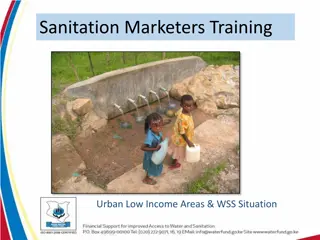Comprehensive Research on IET Programs and Workforce Development
Explore key areas of research including state and local IET policy, career pathways, learner and business needs, emerging practices, and regional workforce development. Assess funding sources, training providers, and learner supports to enhance IET programs. Identify industry sectors, employer needs, and gaps in regional workforce development for informed decision-making. Delve into best practices and successful program features for effective implementation.
Download Presentation

Please find below an Image/Link to download the presentation.
The content on the website is provided AS IS for your information and personal use only. It may not be sold, licensed, or shared on other websites without obtaining consent from the author. Download presentation by click this link. If you encounter any issues during the download, it is possible that the publisher has removed the file from their server.
E N D
Presentation Transcript
Five Key Areas of Research Community Resources to Support your Program State and Local IET Policy and Career Pathways Options Learner and Business Needs Emerging and Promising Practices in IET Programs Regional Workforce Development Needs Phase 1: Research and Assess 1
1) State IET Policy and Career Pathways Some Key Policy Questions to Answer: 1. Does our state have any requirements for IET programs? If so, what are they, and where are they documented? 2. Does our state or local area provide funding for IET, either through federal funds, specific appropriations from state budgets, or private sector funds? 3. Where can we find our state s adult education content standards? Some Key Career Pathways Questions to Answer: 1. What career pathway efforts and/or other adult education training programs are under way in our community? 2. How can an IET program become part of an existing career pathway program to serve adult learners? Phase 1: Research and Assess 2
2) Regional Workforce Development Needs Some Key Questions to Answer: 1. What are the important and growing industry sectors in our region and who are the significant employers in these sectors? 2. Which businesses are having trouble hiring and retaining workers with the right skills, and what specific challenges are they facing? 3. What skills and credentials do these businesses value? 4. What programs/organizations currently provide education and training for adult learners as they prepare for and enter in-demand occupations? 5. What gaps exist in regional services to adult learners? Phase 1: Research and Assess 3
3a) Community Resources: Training Providers Some Key Questions to Answer: 1. Who are the high-quality training providers in my region? 2. Who are potential, high-quality virtual training providers? 3. Which providers are accessible to my learners (public transit accessible, etc.)? 4. Which training providers are supportive of the integration goals of IET? Are they willing and able to invest the time to integrate technical and academic components into the IET program? Phase 1: Research and Assess 4
3b) Community Resources: Funding and Learner Supports Some Key Questions to Answer: 1. What funding sources are available to support IET in this community and state? 2. What services are available in our community to support learner success? What are the requirements and procedures for accessing them? Who provides them, and what relationships might you need to build, or what partnerships might you need to establish, to help your learners access them? Phase 1: Research and Assess 5
4) Emerging and Promising Practices in IET Programs Some Key Questions to Answer: 1. What are some key features of successful IET programs or other workforce development programs that we might want to consider for our IET program designs? What made those features effective in other programs? 2. What are some lessons IET providers or other workforce development providers have learned that we can factor into our work? Phase 1: Research and Assess 6
5) Learner and Business Needs Learner Needs Business Needs 1. What are the educational and career goals of potential learners? 1. How do local employers recruit and hire for the occupations you might target with an IET program? 2. What types of curriculum design and delivery strategies work best? 2. What challenges do people in that occupation have that make it difficult for them to succeed on the job? 3. What experiences outside the classroom (both positive and negative) impact learner success? 3. What makes employees successful in these companies? 4. What ideas do learners have about how IET programs should be designed? 4. How do employees advance in their career in these companies? Phase 1: Research and Assess 7























